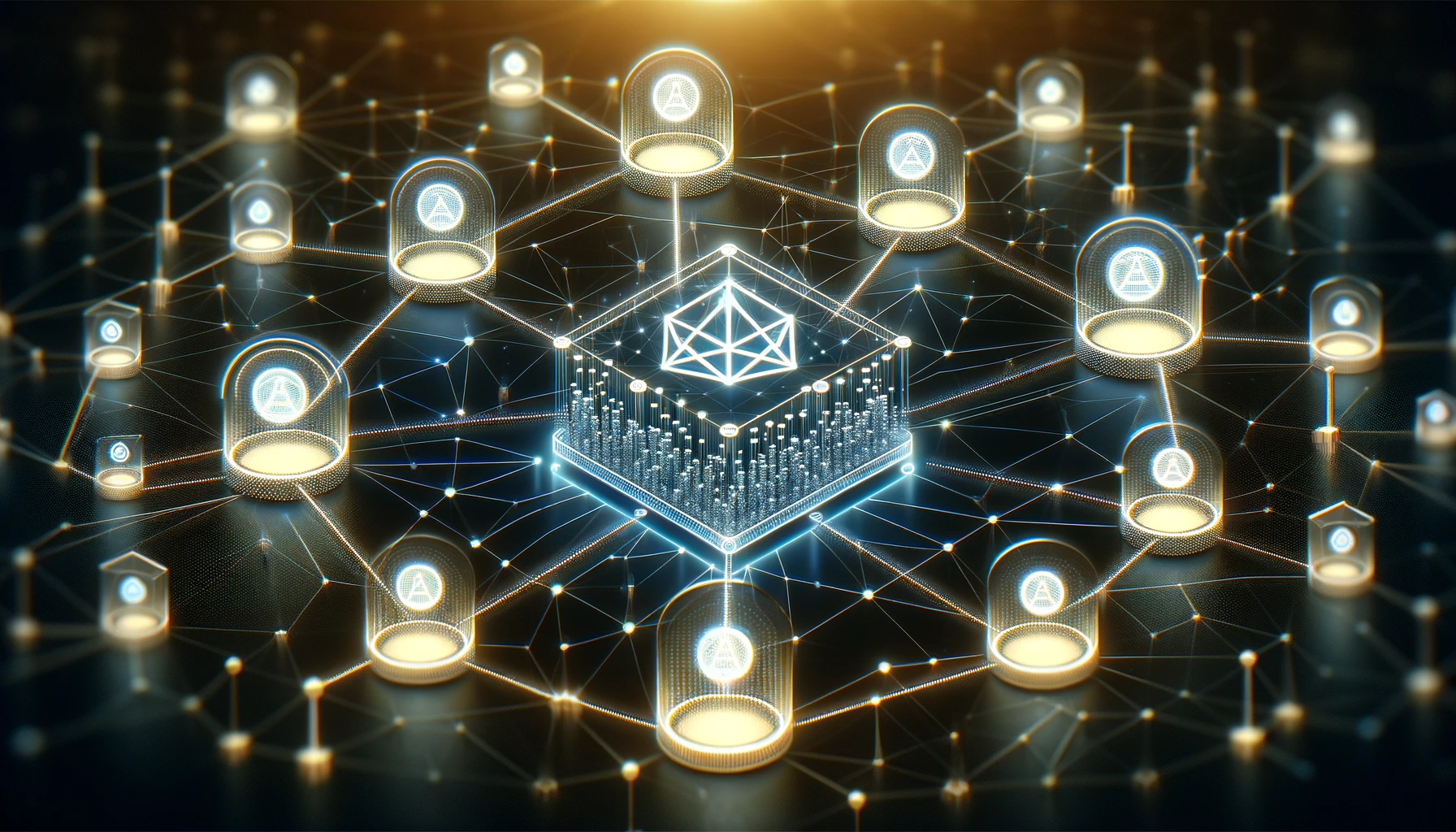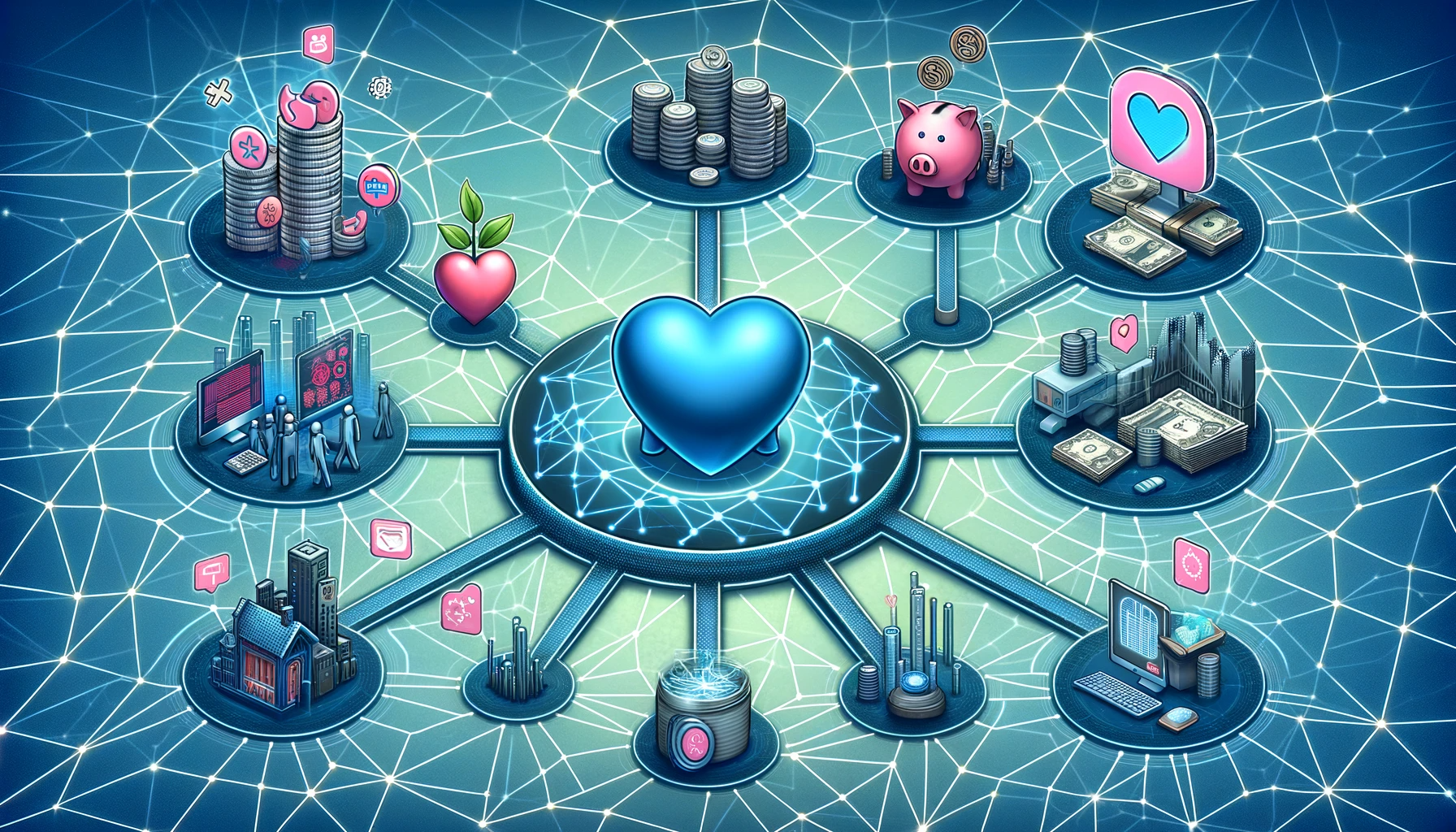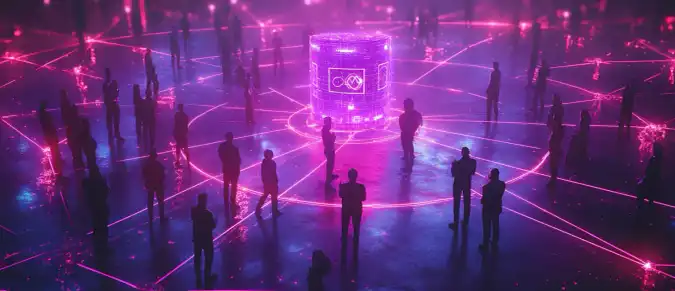Decentralized autonomous organization (DAO) is an organization without central leadership. It is the community organized around certain rules used in the blockchain that makes all decisions. A DAO operates without hierarchical management and is capable of achieving many goals. Networks of freelancers, charitable foundations, and venture capital firms — DAO makes all this possible.
Contents:
- What is a DAO?
- How does a DAO work?
- Why are decentralized autonomous organizations needed?
- The principal-agent dilemma
- Disadvantages of DAOs
- How to participate
- Examples of decentralized autonomous organizations

What is a DAO?
A DAO (decentralized autonomous organization) is a decentralized autonomous organization that operates according to clearly defined rules in the code. It is similar to existing forms of organizations and is managed through smart contracts. The basic infrastructure for building a DAO is the blockchain.
The idea of creating a DAO emerged in 2013. Initially, the name was different. Decentralized Autonomous Corporations, or DACs. The main principles of a DAC are:
- Make all companies decentralized;
- Tokenize their shares;
- Make all operations transparent, with publicly verifiable code.
Subsequently, the idea was refined. The community decided to adapt it for any organization of people, whether or not they have a profit motive. Thus, the decentralized autonomous organization - DAO was founded.
A DAO allows each user to make suggestions, thus all native token holders of the DAO can benefit the entire community.
There are DAOs that use quadratic voting. With it, the largest token holders do not have a significant influence on voting.
DAOs often use their financial reserves to implement ideas voted for by users.
How does a DAO work?
DAOs use smart contracts, which are pieces of code that automatically execute when a set of criteria is met. Ethereum was the first blockchain to use smart contracts, and now they are deployed in most blockchains.
They establish the rules of the DAO. Users who own a stake in the DAO have voting rights, influence the operation of the organization, and make or propose new management decisions.
"A proposal is accepted after a majority of users vote 'FOR'. From DAO to DAO, the methods for determining this majority of users always vary. They are also specified in the smart contracts."
These organizations are autonomous and transparent since they are based on open-source blockchains. Any user can view their code and verify their coins in the DAO. The blockchain keeps all financial transactions.
Typically, the launch of a DAO occurs in three main stages:
| Step | Description |
|---|---|
| Creating a smart contract | A developer or team of developers must create a smart contract for the DAO. Once launched, changes to the rules can only be made through the governance system. Contracts must be thoroughly tested to ensure no critical details are overlooked. |
| Funding | After the smart contracts are created, the DAO needs a method to obtain and manage funding. Tokens are often sold to raise funds, granting holders voting rights. |
| Deployment | Once everything is prepared, the DAO is deployed on the blockchain. From this point, stakeholders collectively make decisions about the organization's future, and the creators no longer have greater influence than any other stakeholders. |

Why are decentralized autonomous organizations needed?
A decentralized autonomous organization offers many advantages over traditional organizations as it operates as an internet organization. The most significant advantage is the lack of need for trust between two parties. You can rely solely on the code. In contrast, traditional organizations require significant trust in the people behind them, especially from investors.
Trusting in the DAO's code is easier because it is publicly available and likely to be thoroughly tested before launch. Every step the organization takes post-launch must be approved by the community and is fully transparent and verifiable.
A DAO performs tasks and grows under user control due to its own token. The lack of hierarchy means that each stakeholder can propose innovative ideas, which the entire community will consider and improve. Disputes within the community are easily resolved through a voting system.
All investors pool funds and have the opportunity to invest early in various startups and decentralized projects, sharing the risk or profit that may be derived from them.
The principal-agent dilemma
The main advantage of decentralized autonomous organizations is solving the "principal-agent" dilemma. This dilemma represents a conflict of priorities between a user or group (the principal) and those who make decisions and act on their behalf (the agent).
Situations like these most often arise in relationships between stakeholders and CEOs. The agent (CEO) may act in personal interests, which do not align with the priorities and goals set by the principal (the stakeholders).
An example of this dilemma occurs when an agent takes on excessive risk because the responsibility falls on the principal. For instance, a trader might use extreme leverage to achieve performance bonuses, knowing that the organization will cover any shortfall.
DAOs can resolve "principal-agent" dilemmas through community governance. Interested users are not forced to join a DAO; they do so only after understanding the rules governing it. These users do not need to trust an agent acting on their behalf; they operate as part of the group.
The interests of all token holders align because the DAO ecosystem encourages them not to act maliciously. Having a stake in the network, all users will act together for the network's success.
Disadvantages of DAOs
No project is perfect, and DAOs are no exception. This new technology has attracted criticism due to concerns about its legality, security, and structure.
The MIT Technology Review stated that entrusting such significant financial decisions to the masses is a bad idea. This statement was made in 2016, and the company has not publicly changed its opinion on DAOs or expressed anything else. Security concerns emerged after the hacking of decentralized autonomous organizations, as flaws in smart contracts are difficult to fix even after being discovered.
DAOs can be distributed across multiple jurisdictions, and they lack a legal basis. Any legal issues are likely to be accompanied by complicated legal proceedings, involving many regional laws.
For example, in July 2017, the U.S. SEC issued a report stating that a DAO had sold securities in the form of tokens on the Ethereum blockchain without authorization, violating the country's securities laws.

How to participate
If you have found a project that interests you, there are various ways to participate in it. It’s important to note that not all decentralized autonomous organizations operate with the same objectives, so you need to identify the primary function of each DAO.
For DAOs focused on technical management, it's necessary to understand the voting rights of token holders and the proposals being discussed.
In cases like Uniswap, coin owners have the right to vote on how a portion of the fees collected by the protocol are allocated. In the Compound protocol, token holders have the right to vote on fee allocations, protocol error fixes, and system updates.
This approach allows all interested parties to join the project and subsequently receive compensation for their work in the form of projects funded by DAO grants.
For other DAOs, the focus is on the pool and treasury allocation. Information about all proposals is accessible, every voting moment is recorded, and these records are reviewable.
Decentralized autonomous organizations often encourage their community to create innovative ideas, funded by DAO grants. Users with entrepreneurial spirit can propose ideas to help develop the protocol further.
Levels of participation in DAOs vary:
- You can switch to governance tokens and pay attention to Snapshot votes;
- Join the DAO’s Discord and engage with projects where you can be rewarded for your contribution;
- Invest funds in DAOs that interest you, engaging in conferences. You always choose how much you want to be involved.
Examples of Decentralized Autonomous Organizations
In recent years, decentralized autonomous organizations have become popular and are now included in many blockchain projects. For example, decentralized finance (DeFi) uses DAOs to make applications fully decentralized.
Some consider the Bitcoin network (BTC) to be the earliest example of a DAO. The network grows by community consensus, even though many network participants have never met each other. It also lacks an organized governance mechanism, instead relying on miners and nodes to signal support.
However, by today's standards, Bitcoin is not considered a DAO. According to current criteria, Dash is a true DAO, as it has a governance mechanism that allows stakeholders to vote on the use of its treasury.
Other, more progressive DAOs, including decentralized networks built on the Ethereum blockchain, are responsible for launching stablecoins backed by cryptocurrencies. In some cases, the organizations that initially launched these DAOs gradually transfer control of the project to become obsolete eventually. Token holders can actively vote on governance proposals to hire new participants, add new tokens as collateral for personal tokens, or adjust other parameters.
A few years ago, DeFi lending protocols launched their governance tokens and distributed them during liquidity mining. Ultimately, every user interacting with the protocol received tokens as a reward. Subsequently, other projects began to copy and adapt the model.
Currently, the list of DAOs is impressive. Over time, it has become a clear concept that is gaining momentum. Some projects are still striving to achieve full decentralization using the DAO model, but it is noteworthy that they are only a few years old and have not yet achieved their ultimate goals and tasks.
As internet organizations, DAOs can make significant changes to corporate governance. As the concept matures and the legal gray area clears, the number of organizations that can adopt the DAO model is increasing.




